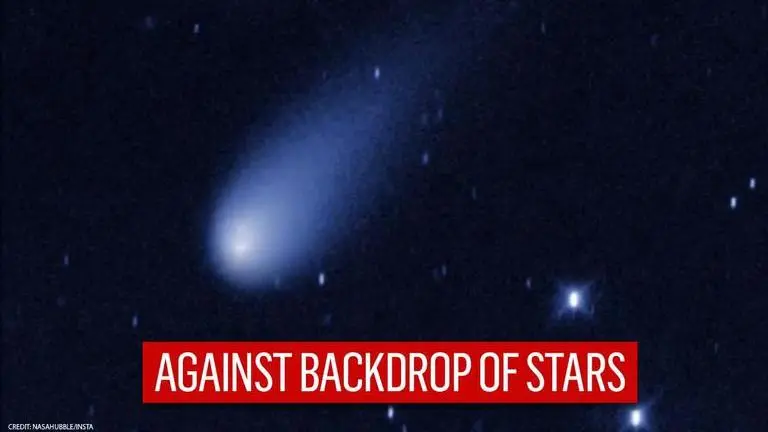Updated 11 November 2020 at 17:07 IST
Time-lapse video of Comet ISON hurtling toward sun mesmerizes internet | WATCH
NASA wrote on Time-lapse video that ISONwas hurtling towards Sun at 48,000 miles per hour and "broke apart" as it passed near the Sun in November that year.
- Entertainment News
- 3 min read

NASA on November 10 shared a mesmerizing throwback time-lapse sequence of the most anticipated astronomical event of May 2013 wherein the now missing comet ISON (C/2012 S1) was captured moving against a backdrop of stars by NASA's Hubble telescope. Taking to its official Instagram handle, NASA wrote that ISON, which was hurtling towards Sun at 48,000 miles per hour, "broke apart" as it passed near the Sun in November that year. The impressive sungrazing comet C/2012 S1 is a scientific tell-tale of the self-destruction of the galactic object that took at least 4 billion years in the making and got detected when observers Vitali Nevski and Artyom Novichonok, near Kislovodsk, Russia, noticed a dim, fuzzy object while they scanned the sky.
#HubbleClassic This time-lapse sequence of Hubble images shows Comet ISON moving against a backdrop of stars in May 2013, as it was hurtling toward the Sun at 48,000 miles per hour. The comet broke apart as it passed near the Sun in November that year: https://t.co/whlpqKYLW8 pic.twitter.com/RLA6wAqCOH
— Hubble (@NASAHubble) November 10, 2020
In the breathtaking video, the comet ISON that went out of the field of view of NASA sun-observing spacecraft can be seen vibrantly lit, flowing rapidly close to the sun. NASA captured the much-anticipated flyby to the sun by Comet ISON on Thanksgiving Day of the year 2013 as it anticipated that bright object will go on to become a 'Great Comet'. However, "Comet ISON fell apart," said Karl Battams of NASA's Comet ISON Observing Campaign in a NASA release. But rather than mourn what we have lost, we should perhaps "rejoice in what we have gained—some of the finest data in the history of cometary astronomy," he added. In the throwback video posted by NASA, comet ISON captured on Nov. 28th can be seen nearing perihelion, its closest approach to the sun.
[This photo of Comet ISON was taken with the TRAPPIST national telescope at ESO's La Silla Observatory on Nov. 15, 2013. Image credit: TRAPPIST/E. Jehin/ESO]
[Here are two images of Comet ISON taken hours apart, as the comet was nearly closest to the sun, showing a large amount of disintegration. The comet had brightened on November 27, but then it faded again shortly before perihelion on November 28, which did not bode well for its survival. Image via ESA/NASA, annotations by Karl Battams.]
Advertisement
[This gif is pre-perihelion, but it’s one of my favorite images of Comet ISON. It’s Comet ISON (bigger and brighter) and Comet Encke from November 19-22, 2013 as seen encountering the solar wind. Image via NASA. Image via Karl Battams/NRL/NASA-CIOC.]
Advertisement
Comet disintegrated and dispersed
According to NASA, the icy comet possessed an extensively riotous tail about 20 times wider than the full Moon and a head bright enough to see in the pre-dawn eye with the unaided eye was going to transform into a great comet. The event was witnessed by nearly 32,000 people from a fleet of solar observatories including the twin STEREO probes, the Solar Dynamics Observatory, and SOHO. But while the comet ISON approached the sun brightly lit, it faded, disintegrating and dispersing as it headed closer to the sun. The comet’s downfall that reached its climax at 1:41 p.m. EST on Nov. 28, 2013, confused the astronomers as it created a mystery around the tricks of orbital dynamics. Users on Instagram were mesmerized to witness the spectacular event from years ago.
Published By : Zaini Majeed
Published On: 11 November 2020 at 17:08 IST





